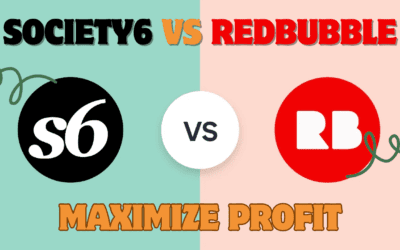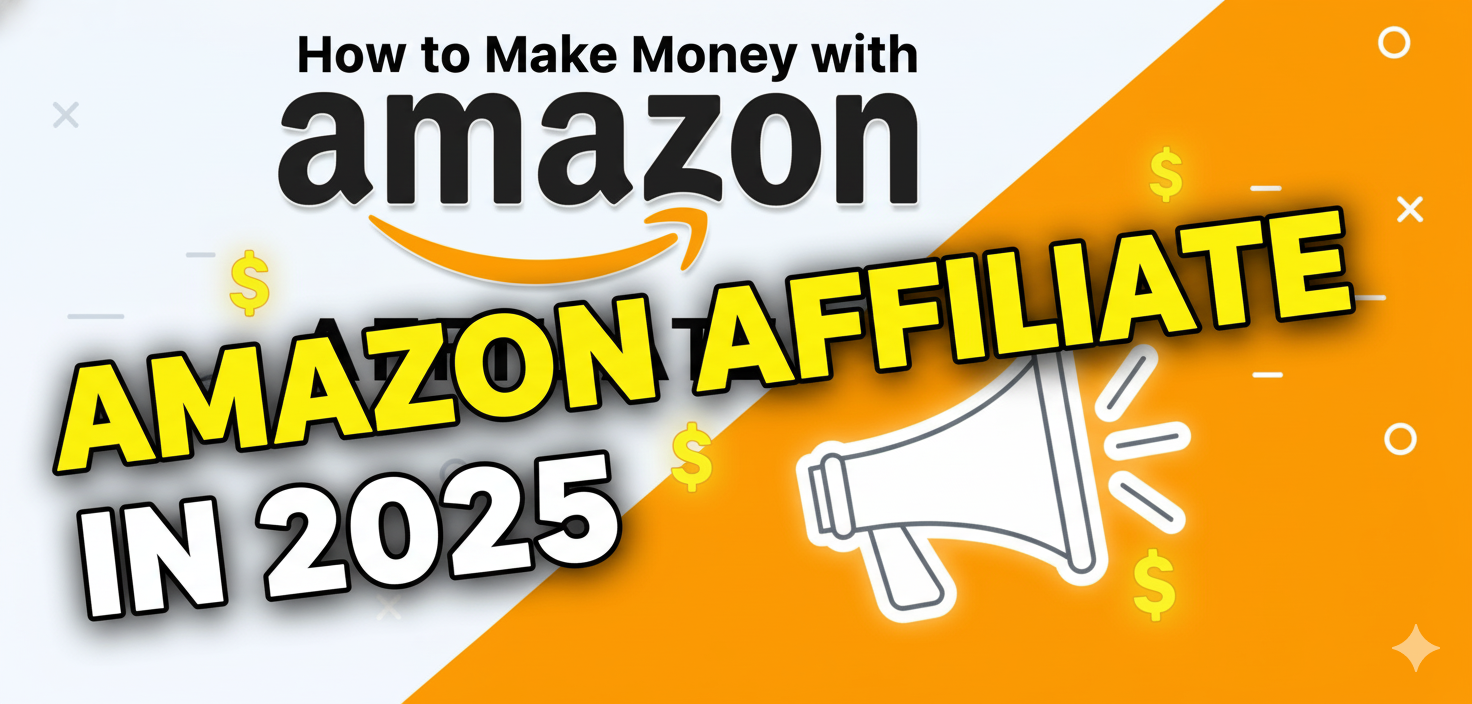Introduction
What if the content you’re already creating could generate a steady, passive income? Amazon Affiliate Marketing, known officially as the Amazon Associates Program, makes this possible. It’s one of the world’s largest affiliate marketing programs, allowing content creators to earn commissions by recommending products from Amazon’s vast inventory.
This isn’t a get-rich-quick scheme, but a legitimate business model. The global affiliate marketing industry is projected to be worth $17 billion in 2025, and Amazon is a dominant player within it. By integrating strategic content creation with a deep understanding of the program’s mechanics, you can turn your website into a profitable asset.
What is the Amazon Associates Program?
The Amazon Associates Program is a performance-based marketing initiative. As an Associate, you place special tracking links to Amazon products on your website, blog, or social media. When a visitor clicks your link and makes a qualifying purchase on Amazon, you earn a commission.
It’s a powerful way to monetize your audience because you’re being paid for your influence and trust.
How the Program Works: Cookies and Commissions
The system operates on a 24-hour cookie window. When a user clicks your affiliate link, Amazon places a cookie on their browser. If they make any purchase on Amazon within the next 24 hours, you earn a commission on that sale.
There’s an important extension: if a user adds a product to their cart within that 24-hour period but completes the purchase much later, you can still earn the commission as long as the buy happens within 90 days. This significantly increases your earning potential on considered purchases.
Why It’s a Lucrative Opportunity
- Massive Product Selection: With millions of products across countless categories, you can find relevant items to promote no matter your niche.
- Brand Trust: Amazon is a globally recognized and trusted brand. This inherent trust can increase your conversion rates, as users are already comfortable shopping there.
- Substantial Earning Potential: The affiliate marketing industry drives a significant portion of online sales, with 16% of all online orders in the U.S. coming through affiliate marketing. While individual earnings vary, some affiliates in high-performing niches like Education and eLearning earn average monthly incomes of $15,551.
How to Join the Amazon Associates Program
Joining the program is a straightforward process.
- Check Your Site’s Eligibility: You need a qualifying website, blog, mobile app, or established social media presence. Your platform must not violate intellectual property rights or promote explicit, violent, or discriminatory content.
- Sign Up on the Official Portal: Visit the Amazon Associates website (affiliate-program.amazon.com) and click “Sign up.” You’ll need to provide:
- Your account information (name, address, phone number).
- The URLs of the websites or apps you’ll use for promotion.
- Details about your site’s content, such as topics, traffic sources, and audience.
- Verify Your Identity: Amazon will call you to verify your phone number with a PIN code.
- Enter Tax and Payment Information: Provide your tax information and choose a payment method (e.g., direct bank deposit, Amazon gift card).
- Start Building Links: Once approved, you can immediately access your Associates Central dashboard and begin creating your first affiliate links.
Finding Your Niche and Mastering Keyword Research
Success in affiliate marketing hinges on targeting the right audience with the right terms.
Choosing a Profitable Niche
Select a niche you are passionate about and that has a proven earning potential. Here are the average monthly incomes for affiliates in various niches according to industry data:
| Niche | Average Monthly Affiliate Income |
|---|---|
| Education & eLearning | $15,551 |
| Travel | $13,847 |
| Beauty & Skincare | $12,475 |
| Finance | $9,296 |
| Technology | $7,418 |
| Health & Fitness | $7,194 |
| Home & Garden | $5,095 |
Conducting Effective Keyword Research
Keyword research is the foundation of your SEO strategy. Your goal is to discover the terms your potential audience uses to search for products and information.
- Use Amazon’s Own Tools: If you are a registered brand owner, use Amazon Brand Analytics. Its keyword search tool shows you the most popular search terms on Amazon itself.
- Leverage Third-Party Tools: Tools like Ahrefs, SEMrush, and Google’s Keyword Planner can help you find keywords with high search volume and manageable competition.
- Analyze Search Trends: Pay attention to seasonal trends and rising search terms. For example, searches for “home office equipment” may rise as more people work remotely.
- Test Variations: Don’t overlook simple keyword variations. Adding a plural “s” to a term like “sock” can dramatically increase its search frequency rank.
Creating High-Converting Content
Quality content is what transforms casual browsers into loyal followers—and buyers.
Top Content Formats for Amazon Affiliates
- In-Depth Product Reviews: Hands-on, honest reviews are the backbone of affiliate marketing. Detail the product’s features, pros, cons, and who it’s best for. Using the product yourself allows you to create authentic videos and photos, which dramatically increases trust.
- “Best Of” and Roundup Lists: Articles like “The 5 Best Blenders for Smoothies in 2025” are extremely effective. They cater to users who are researching but haven’t decided on a specific model yet. This format also allows you to include multiple affiliate links.
- Detailed Buying Guides: Help your audience make a decision by explaining what to look for in a product. A guide on “How to Choose a Laptop for Graphic Design” can establish your authority and naturally incorporate links to recommended products.
- Comparison Articles: Pit two or more popular products against each other (e.g., “Nintendo Switch vs. Steam Deck”). This helps users weighing their options and positions you as a helpful expert.
SEO Optimization for Your Content
To ensure your content ranks well and drives traffic, follow these SEO best practices:
- Craft Powerful Titles: Your title is one of the most important SEO elements. Include your primary keyword and make it compelling. For example, “Amazon Affiliate Marketing: A 2025 Beginner’s Guide to Your First Sale.”
- Structure with Headers: Use H2 and H3 tags to break up your content. Include keyword variations in these headings to show search engines the breadth of your article’s coverage.
- Optimize Images: Always use descriptive file names and fill in the alt text for your images. This improves accessibility and provides another opportunity for image search SEO.
- Build Internal Links: Link to your other relevant blog posts. This keeps readers on your site longer and helps search engines crawl your site more effectively.
- Aim for Comprehensive Content: Longer, in-depth posts (over 2,000 words) often perform better in search results as they are seen as more authoritative and comprehensive.
Advanced Conversion Optimization Strategies
Getting traffic is only half the battle; converting that traffic into clicks and sales is the ultimate goal.
- Create a Seamless User Experience (UX): A fast, clean, and easy-to-navigate website is crucial. 40% of users will abandon a site that takes more than 3 seconds to load. Improve site speed by optimizing images and using caching plugins.
- Place Links Strategically: Don’t hide your affiliate links. Incorporate them naturally within your content, in your conclusion, and use call-to-action buttons (e.g, “Check Price on Amazon”).
- Leverage Multiple Platforms: Don’t rely solely on your blog. Over three-fourths of affiliate marketers use Facebook, and platforms like Instagram and YouTube are also highly effective for promotion. (Insert related ProTec Blog link here on “Social Media Strategies for Affiliates”).
- Use Amazon’s Advanced Tools: Explore Native Shopping Ads, which can be customized to fit your site’s design and showcase products based on a visitor’s browsing history.
Understanding Amazon’s Rules and Common Mistakes to Avoid
Compliance is non-negotiable. Violating Amazon’s Operating Agreement can lead to account suspension and forfeiture of earnings.
Key Compliance Points
- Disclose Your Affiliation: You must clearly state that you are a participant in the Amazon Associates Program and will earn from qualifying purchases. This is a legal requirement and builds trust with your audience.
- Don’t Use Prohibited Tactics: This includes linking to Amazon from emails, using link shorteners that hide the destination, and promoting on sites that violate Amazon’s content policies (e.g., sites with illegal content).
- Don’t Stuff Keywords: On your product pages or in your backend search terms, avoid repeating keywords unnecessarily. Amazon’s system only scrapes a keyword once, and stuffing can hurt your rankings.
Beginner Pitfalls and How to Avoid Them
- Mistake: Choosing the Wrong Niche. A niche that’s too broad (“electronics”) is hyper-competitive, while one that’s too narrow may have no buyer demand.
- Solution: Research beforehand. Use the niche income table above as a starting point and find a sub-niche you can own.
- Mistake: Focusing Only on High-Commission Products. Promoting a $1,000 item with a 1% commission ($10) is often harder than promoting a $50 item with an 8% commission ($4) that your audience genuinely needs.
- Solution: Prioritize products that solve your audience’s problems. Higher conversion rates on lower-ticket items can be more profitable in the long run.
- Mistake: Giving Up Too Early. A staggering 95% of affiliate marketers fail and quit. Success requires consistent effort over time.
- Solution: Treat it like a business. Create a content calendar, be patient, and consistently analyze and refine your strategy.
Frequently Asked Questions (FAQ)
How much can I realistically earn with Amazon Affiliate Marketing?
Earnings vary widely based on your niche, traffic, and strategy. Industry data shows that 35% of affiliates make at least $20,000 yearly, while 15% earn between $80,000 and $1 million annually. Beginners often earn $0-$1,000 monthly, while top “super affiliates” can earn over $100,000 per month.
What is the biggest disadvantage of the Amazon Associates program?
The two most common drawbacks are the relatively low commission rates (1-10% depending on category) compared to some other programs, and the short 24-hour cookie duration for users who don’t add a product to their cart.
Can I use Amazon affiliate links on social media?
Yes. You can share your affiliate links on platforms like Facebook, Twitter, and YouTube. For social media influencers, Amazon also offers a separate Amazon Influencer Program with features like custom storefronts.
Is the Amazon affiliate program free to join?
Yes. There is no cost to apply for or participate in the Amazon Associates Program. You start earning from your very first qualifying sale.
Conclusion
Building a successful Amazon Affiliate Marketing business is a marathon, not a sprint. It requires a solid foundation of quality content, a deep understanding of SEO, and a commitment to serving your audience’s needs. By choosing the right niche, creating valuable content, and adhering to Amazon’s guidelines, you can establish a sustainable and profitable online income stream.
Start today by signing up for the program and publishing your first in-depth product review. Your journey toward becoming a successful Amazon Affiliate starts now.

















